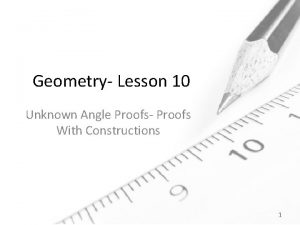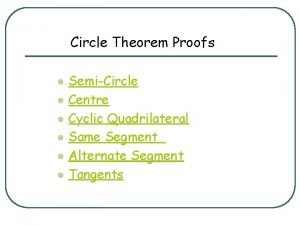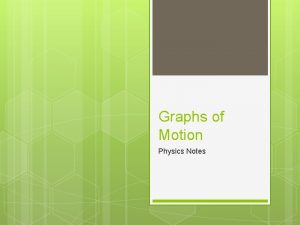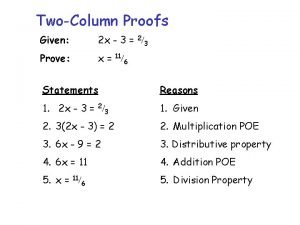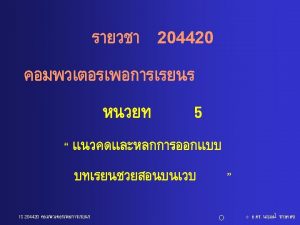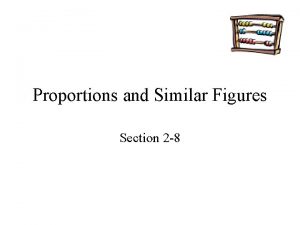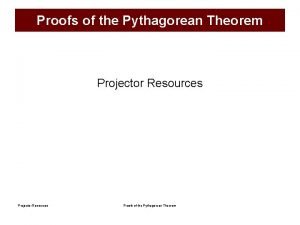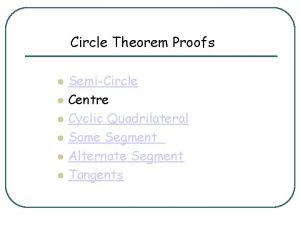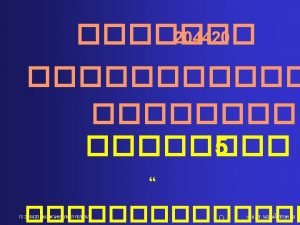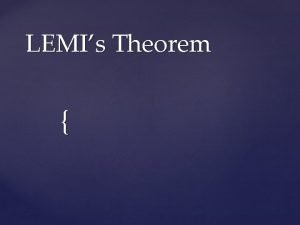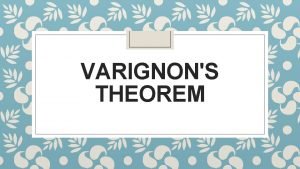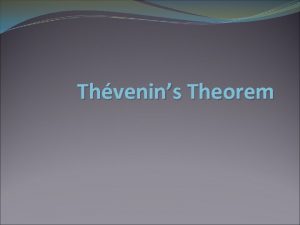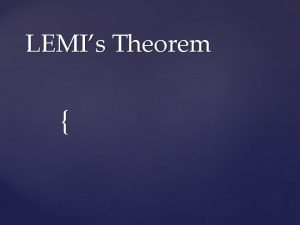Two Proofs Same Theorem 1 Traditional approach 2











- Slides: 11

Two Proofs, Same Theorem 1. Traditional approach 2. Teaching for Understanding approach via Problem-Based Instructional Task

Theorem to Prove 1. Alternate interior angles formed by two parallel lines cut by a transversal are congruent. 2. `Twas brillig, and the slithy toves Did gyre and gimble in the wabe: All mimsy were the borogoves, And the mome raths outgrabe. (Will #1 sound any more meaningful to students than #2? Can we help make it meaningful for them? )

(from Through the Looking-Glass and What Alice Found There, 1872)

Problem-Based Instructional Tasks: • Help students develop a deep understanding of important mathematics • Emphasize connections, especially to the real world • Are accessible yet challenging to all students • Can be solved in several ways • Encourage student engagement and communication • Encourage the use of connected multiple representations • Encourage appropriate use of intellectual, physical, and technological tools

Teaching for Understanding means: • Developing deep conceptual and procedural knowledge of mathematics • Posing problem-based instructional tasks • Engaging students in tasks and providing guidance and support as they develop their own representations and solution strategies • Promoting discourse among students to share their solution strategies and justify their reasoning • Summarizing the mathematics and highlighting effective representations and strategies • Extending students’ thinking by challenging them to apply their knowledge in new situations, especially in real-world situations • Listening to students and basing instructional decisions on their understanding

Traditional Proof Lesson • Engage in sample lesson from traditional text. • Then reflect and analyze (see next slide).

Traditional Proof Lesson • Problem-based instructional task? Discuss and explain. (re: attributes previous slide) • Focus on teaching for understanding? Discuss and explain. (re: attributes previous slide) • Launch-Explore-Summarize? Discuss and explain. • Inductive reasoning Deductive proof? [Find a pattern, make a conjecture, by examining data or examples. Then use if-then reasoning to prove. ] Discuss and explain.

Video of CMIC Lesson As you watch the video, focus on: • Use of questioning • Problem-Based Instructional Task attributes • Teaching for Understanding attributes

CMIC Proof Lesson • Problem-based instructional task? Discuss and explain. (re: attributes previous slide) • Focus on teaching for understanding? Discuss and explain. (re: attributes previous slide) • Launch-Explore-Summarize? Discuss and explain. • Inductive reasoning Deductive proof? [Find a pattern, make a conjecture, by examining data or examples. Then use if-then reasoning to prove. ] Discuss and explain.

Source for video: STREAM video series COMAP Contemporary Mathematics in Context “Shapes and Geometric Reasoning” www. comap. com/highschool/projects/stream/ Videos available for all NSF high school projects

Two Proofs, Same Theorem 1. Traditional approach 2. Teaching for Understanding approach via Problem-Based Instructional Task
 Lesson 10 unknown angle proofs
Lesson 10 unknown angle proofs Lesson 9 unknown angle proofs
Lesson 9 unknown angle proofs Traditional approach to systems implementation
Traditional approach to systems implementation Green's theorem stokes theorem
Green's theorem stokes theorem Circle theorem proofs
Circle theorem proofs When two curves coincide the two objects have the same
When two curves coincide the two objects have the same Two collumn proof
Two collumn proof It involves the same techniques as in traditional painting
It involves the same techniques as in traditional painting Same time same place แปลว่า
Same time same place แปลว่า Same place same passion
Same place same passion Similar figures have the same but not necessarily the same
Similar figures have the same but not necessarily the same Similar figures / proportion (level 2)
Similar figures / proportion (level 2)
